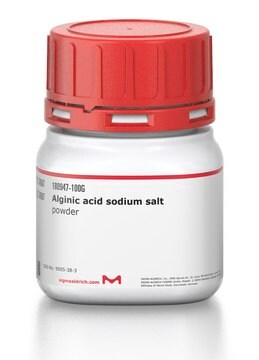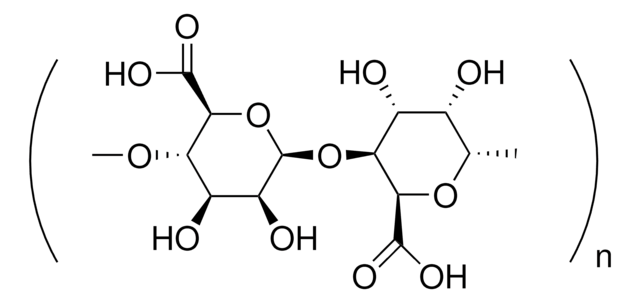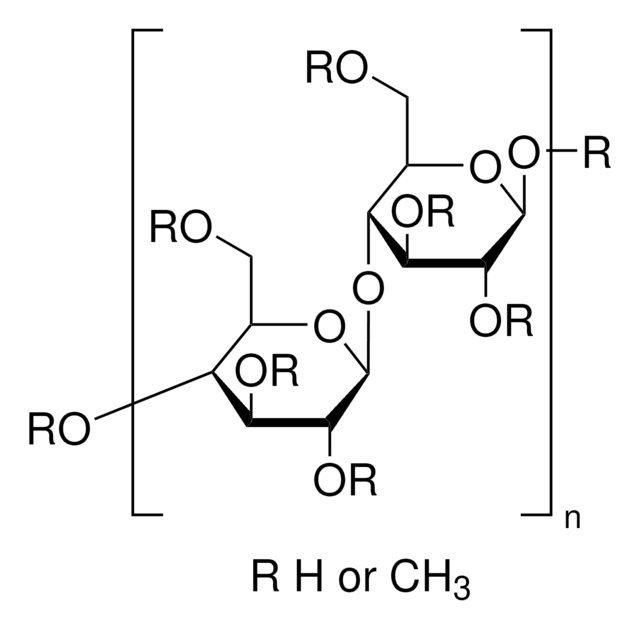Key Documents
A2033
Alginic acid sodium salt from brown algae
Medium viscosity
Synonim(y):
Algin, Sodium alginate
About This Item
Polecane produkty
pochodzenie biologiczne
algae (brown)
Poziom jakości
Postać
powder
kolor
white to brown
lepkość
≥2,000 cP, 2 %(25 °C)
rozpuszczalność
water: 10 mg/mL, slightly hazy to strongly hazy, faintly yellow to yellow
temp. przechowywania
2-8°C
InChI
1S/C6H10O7.Na/c7-1-2(8)4(5(10)11)13-6(12)3(1)9;/h1-4,6-9,12H,(H,10,11);/q;+1/p-1/t1-,2-,3-,4?,6+;/m0./s1
Klucz InChI
MSXHSNHNTORCAW-MPGIDXPLSA-M
Szukasz podobnych produktów? Odwiedź Przewodnik dotyczący porównywania produktów
Zastosowanie
Inne uwagi
Kod klasy składowania
11 - Combustible Solids
Klasa zagrożenia wodnego (WGK)
WGK 1
Temperatura zapłonu (°F)
Not applicable
Temperatura zapłonu (°C)
Not applicable
Środki ochrony indywidualnej
Eyeshields, Gloves, type N95 (US)
Certyfikaty analizy (CoA)
Poszukaj Certyfikaty analizy (CoA), wpisując numer partii/serii produktów. Numery serii i partii można znaleźć na etykiecie produktu po słowach „seria” lub „partia”.
Masz już ten produkt?
Dokumenty związane z niedawno zakupionymi produktami zostały zamieszczone w Bibliotece dokumentów.
Nasz zespół naukowców ma doświadczenie we wszystkich obszarach badań, w tym w naukach przyrodniczych, materiałoznawstwie, syntezie chemicznej, chromatografii, analityce i wielu innych dziedzinach.
Skontaktuj się z zespołem ds. pomocy technicznej







